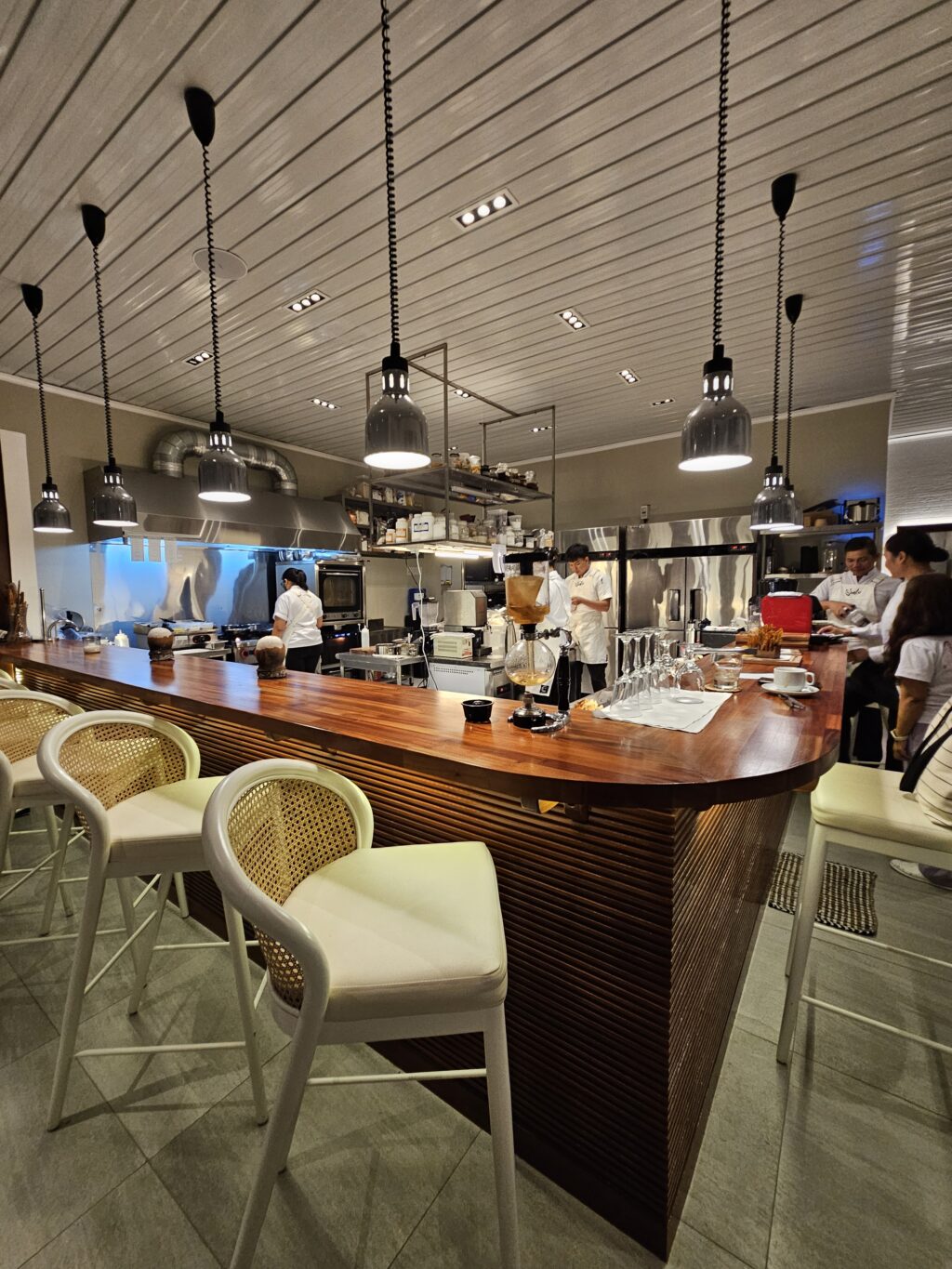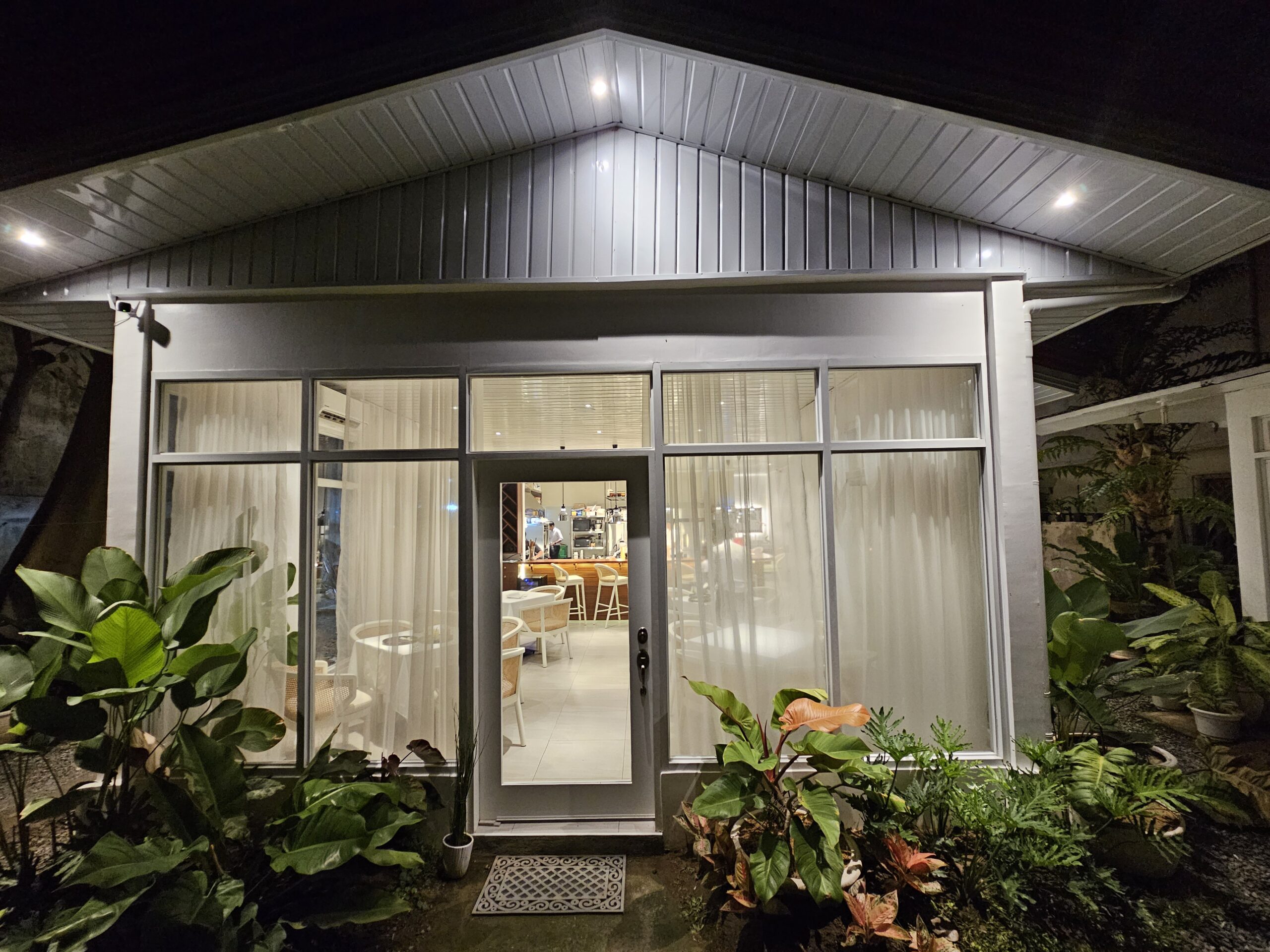HONG KONG – On a 2019 trip to Myanmar, I met a Singaporean chef who shared that the worst food she ever tasted in her life was Filipino food.
It is not for everyone.
It is not for those seeking buffet gatherings.
It is not your typical dining experience.
“Perhaps you had the wrong ones,” I quipped without divulging to her that I’m a Filipino from Cebu.
She said she had her fill of adobo, kare-kare, tinola, sisig, pancit, and everything else pork, fish, and fowl.
After trying all these, she found Filipino dishes to be too greasy, overly-cooked, and “nothing distinct about them.”
I thought about her after I completed a 16-course tasting menu at Sialo, a Cebuano restaurant that approached food with careful understanding of local ingredients and meticulous preparation and process before each dish is delivered to each diner’s table.
Sialo is where Cebu cuisine is rightfully elevated and truly takes on the challenge of making local ingredients such as biasong (wild citrus/lime endemic to southern Philippines) and tinigib (white corn variety) as conversation pieces.
Helmed by multi-hyphenate Ronald “Chef Ron” Villavelez, Sialo is about giving Cebuano cuisine new forms and textures that will surprise Cebuanos. The foreign and uninitiated guests unfamiliar to Cebuano dishes will have a gastronomic introduction to a whole new world of Filipino cooking.
The Sialo Fiesta Experience: a 16-course degustacion
For this tasting menu, Chef Ron and his team first served biasong-tanglad kinutil, a rather interesting take on the traditional kinutil which is often made of tubâ (palm wine), raw egg yolks, and tabliya (homemade chocolate).
Chef Ron’s version is a concoction of Chinese wine, gin, ginger, rose petals, lemongrass and biasong peelings which together make up a drink that stimulates the appetite to prepare the belly for the next 15 dishes ahead.
The next treat was the three crackers made of landang with mountain herbs, sweet potato, and tinigib corn with seeds mix. Think of landang as native tapioca made from native palm flour. The crunchy threesome is paired with tomato-herb and brown miso-biasong herb pastes.
Classic Visayan songs played in the background as me and my fellow diners awaited the serving of more dishes. Chef Ron shared that the songs were arranged and recorded especially for Sialo, which is one proof that a dining experience in this restaurant also comes with a curated repertoire of Cebuano-Visayan songs.
Next to arrive on the table is homemade focaccia served with liver paste.
When making focaccia, the baker is often advised to use the fingertips to press little dimples into the dough. Sialo’s focaccia and its accompanying liver paste with dayap (key lime) brought out smiles (and dimples!) as the rich, earthy, and slightly sweet tastes of the liver combined with the tart-tangy blend of the dayap.
Excitement was evident on Louella “Tita Loy” Alix’s face when she checked the lineup of dishes and saw “Itlog Mo ‘Noy Orange.”
As Cebu’s food historian, Tita Loy reminded us this “very Cebuano phrase” that recalls what snack peddlers would say to bus passengers when they offer their food normally consisting of itlog (hardboiled eggs) and “orange” (which refers to the orange-colored carbonated drink).
The dish arrived on a plate that looked like a scene straight out of E.B. White’s Charlotte’s Web book. The presentation gave off a farm-like vibe with emphasis on the wonders that can happen when cooking with eggs.
The “orange” egg is actually a fried egg under mushroom truffles. Sitting pretty on the spoon is a fake poached egg that is made of spiced mango-orange combination and goat yogurt.
For this dish, Chef Ron advised to take the entire fried egg in one mouthful and then follow-up with the “poached egg.”
It was a blissful experience for all flavors to burst in your mouth with the tongue going crazy over this newly-found nirvana.
Kind reminder: When served with “Itlog Mo Noy,” do what the chef says.
Brave Move
“This is how I want my guests to experience food… in different forms and textures,” said Chef Ron as Sialo’s version of kare-kare, dinuldog, and manok tinuwa were laid down on our table.
The presentation intimidated me at first look but Chef Ron jumped in to help us figure it out. His advice: start with the tinuwa, followed by the dinuldog, and then proceed with the kare-kare.
“Lumsan Sa Sabaw” (To Drown In Soup) is three-dishes in one plate that showcased Chef Ron’s knowledge and background as a product of Cebu City Science High School.
Manok tinuwa (chicken soup) transformed into an emulsion; dinuldog (squash soup) took the noodle form; and kare-kare (hodgepodge of meat and vegetables in peanut sauce) turned into a savory croquette.
“Designing or cooking: which one would you choose?” I asked Chef Ron.
No decision has to be made, he said. He can do both along with writing.
Prior to becoming a chef, Ronald Villavelez was (and still is) an established designer in Cebu’s fashion scene under the brand, Ronald Enrico. He also contributes articles for magazines and wrote a column in the now-defunct Cebu Daily News.
His response to my query answered what was supposed-to-be my next question: “Why are you spending so much time and money in creating all these?”
The answer is that Chef Ron is downright passionate about the craft of cooking and the logical progression is for him and his team to introduce Cebuano food to a wider audience.
He is around to fill the void that has never been filled or, in my honest observation, the space that nobody dared to take because many are afraid to venture in a territory that has not been explored.
Liquid Salad
The night progressed with “Rosas Pandan” (rose-pandan elixir) that aptly cleansed the palate to prepare us for another round of dishes.
“Paku Not Wings” is a vegetable salad which features edible fern served in different ways.
A liquid salad soda made of paku, apple, cucumber, and lettuce offered a refreshing take on the usual solid-green ensemble.
The fern and roasted chicken salad tart came in a playful presentation with fresh cucumber, landang biscuit, and roasted chicken encased in paku gel. The tart was topped with wild cucumber slices.
And then there’s balangaw or, in the word that many understand, rainbow.
I was initially confused about what to make of this dish. Should I use my spoon? But I have sat in degustation dinners in other countries (like the one I am in as I write this part of the review) and some dishes just don’t make sense.
But try it anyway for a surprise.
And so I did.
Balangaw will nudge you to lick the plate.
Literally.
Arranged following the colors of the rainbow are tomato jam (red), carrot puree (orange), mango (yellow), avocado (green), blue curacao (blue), blueberry puree (indigo), and spiced eggplant (violet).
Lick in different ways then tell me what you think.
Seafood & Pork
It is a good idea to stand up after the eighth or ninth dish or after you licked your plate.
My regret is that I remained seated when the oyster was served.
“Talaba Talaga” is fried oyster in oyster gel and biasong foam. You will be served with edible shell so do not be afraid to consume it.
Cebu’s pre-colonial food preparation SUTUKIL (sugba, tuwa, kilaw) which stands for to grill, to stew, and to eat as raw (ceviche).
For sutukil, Chef Ron used yellowfin tuna and ubod (eel).
From seafood, we moved to Chorizo de Cebu which is normally served during breakfast.
Sialo’s version of this Cebuano favorite is a scientific discussion on how the meat was bound together without eliminating spicy banana ketchup in the mix. Do ask the chef to explain this part.
At that point of the dinner, I already saw Ronald Villavelez as a chef and not the designer of a gown I wore in 2007 for a Cebu Press Freedom event.
He rejoined us and introduced another Cebuano find; a legume named tinduganay that looked like mung beans (monggo) but has a nutty flavor that renders it different from its “cousin.”
He smiled and told us how farmers from the northern Cebu town of Catmon introduced it to him in 2019.
Looking at him, I can only imagine the dish he has in mind for the rare tinduganay.
For the last two dishes before desserts, Chef Ron served “Nasaag Sa Kalasangan” (Lost in the Forest) and “Humba Bisaya” (Cebuano Braised Pork).
Nasaag Sa Kalasangan mimicked the ecosystem of the forest using tinigib as edible soil and matcha sponge cake as moss.
Takyong (local bush snail) took centerstage in this dish as it was cooked in olive oil and butter. Mushroom ketchup, onion puree, and garlic cream completed this dish.
Sialo’s Humba Bisaya (Visayan Braised Pork) is pork that underwent 24 hours of curing and then cooked sous vide (low temperature, long-time cooking) for 48 hours. It came in fermented black bean sauce, roasted pineapples, pomegranate, and chicharon crumbs.
Sweet Treats
A dessert named Alibangbang was brought to our table and I asked: “Where’s the butterfly?”
In front of me was dalandan crumble, mousse, brandy apple, and brown sugar meringue.
The dessert got its name from the alibangbang leaf that is served with the other sweets. Alibangbang is used as a souring agent for soup dishes.
While I often do not enjoy desserts, Sialo’s Halo-Halo changed the game for me.
The jackfruit ice cream is not to die for, you live for it. Then think about flan, mango coconut cream, corn tuile, crispy tapioca, ube halaya, and marinated jackfruit in a cup.
The 16th dish, “Coconut Is A Nut,” was served as a surprise to couple Louella and Rudy Alix who celebrated their 53rd Wedding Anniversary that night.
It consisted of budbud (sticky rice cake), dark chocolate shell, spiced mango ice cream, and a filling made of coconut ricotta, coconut pandan cream, and coconut cream.
No cookie-cutter
Sialo’s name originated from the Greek prefix sialon which means saliva or salivary. It (Sialo) is also the vernacular spoken in the southeastern part of Cebu.
The restaurant is located on No. 7A President Laurel Street surrounded by a residential community in the quiet area of Barangay Kasambagan. Your gateway to this gastronomic encounter is the road right next to the Sarrosa International Hotel.
Sialo is Cebuano cuisine reimagined and revolutionized. It is surprising, shocking, and can-be intimidating all in one bite.
It is not for everyone.
It is not for those seeking buffet gatherings.
It is not your typical dining experience.
In Hong Kong, a nine-course degustation is considered affordable at HKD 1,080 (about Php 7,500).
Sialo’s 16-course dinner is priced way less than that.
Leaving Sialo that night made me think of Adya, the Singaporean chef who thinks there is nothing distinct about Filipino food.
Perhaps when our plates align again, I can take her to Sialo and let Chef Ron and his team help her discover the joy, wonder, and magic of Cebu’s heritage food.
Come to Sialo and enjoy the luxury that comes with making food from local dishes. Book your table at sialocebu.com/reservations.
ADVERTORIAL



